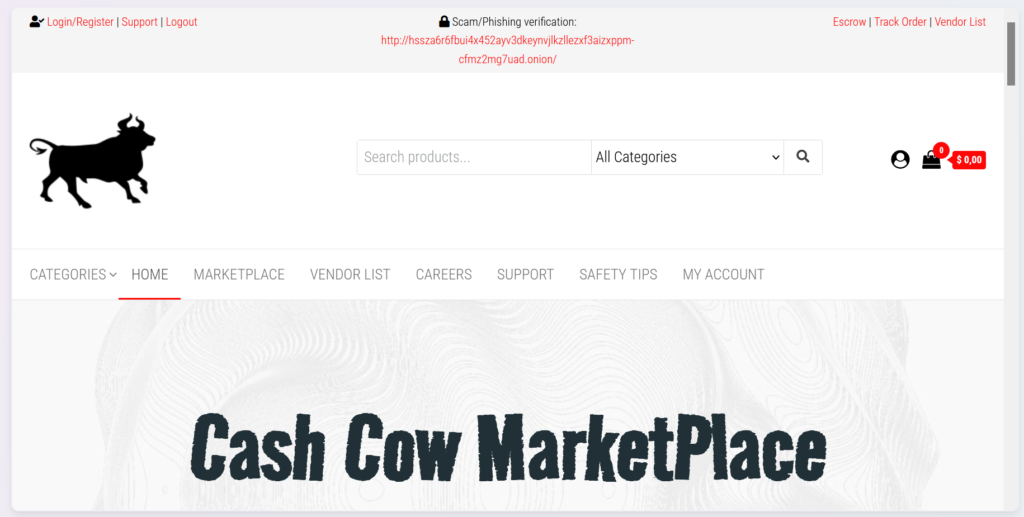Table of Contents
ToggleCash Cow – TOR Scam Report (1)
Onion Link: http://hssza6r6fbui4x452ayv3dkeynvjlkzllezxf3aizxppmcfmz2mg7uad.onion/
Scam Report Date: 2024/07/27
Client Scam Report Breakdown
Original Scam Report:
In a brief yet concerning scam report, a client detailed their unfortunate experience with an online purchase. The client purchased an item but did not receive the product. Attempts to contact the seller were met with silence, leaving the buyer without the purchased item or any communication from the seller. This situation highlights a classic case of online fraud, where the seller’s failure to fulfill their end of the transaction and subsequent lack of response indicates a potential scam.
Defining Key Terminology and Terms
To understand the nuances of this scam report, it’s essential to define some key terms and concepts frequently encountered in online transactions and fraud cases. First, the term “scam” refers to a deceptive scheme or trick used to cheat someone out of something, typically money. In the context of e-commerce, a scam often involves selling non-existent products or services to unsuspecting buyers.
Another important term is “online purchase,” which refers to the act of buying goods or services over the internet. This method of shopping has grown immensely popular due to its convenience and the wide range of available products. However, it also presents unique risks, including the potential for fraud. The term “inquiries” in this report refers to the buyer’s attempts to contact the seller to resolve the issue. These can include emails, phone calls, or messages through the selling platform’s communication system. The lack of response to these inquiries is a significant red flag in identifying fraudulent activity.
Implications and Preventive Measures
The report’s implications are significant for both consumers and the broader online retail industry. For consumers, this experience underscores the importance of due diligence when making online purchases. Before buying, it’s crucial to research the seller, read reviews, and verify the legitimacy of the website or platform. Utilizing payment methods that offer buyer protection can also provide an added layer of security. For the online retail industry, this case serves as a reminder of the need for robust measures to prevent and address fraud. Platforms can implement stricter verification processes for sellers, offer more transparent dispute resolution mechanisms, and provide educational resources to help buyers recognize and avoid scams. By taking these steps, both consumers and businesses can work towards a safer online shopping environment.
In conclusion, the scam report serves as a cautionary tale about the risks associated with online shopping. The absence of the purchased item and the seller’s non-response are clear indicators of a scam. Understanding key terms like “scam,” “online purchase,” and “inquiries” helps contextualize the report and its implications. Both consumers and the industry must remain vigilant and proactive in combating online fraud, ensuring a more secure and trustworthy marketplace for all.







